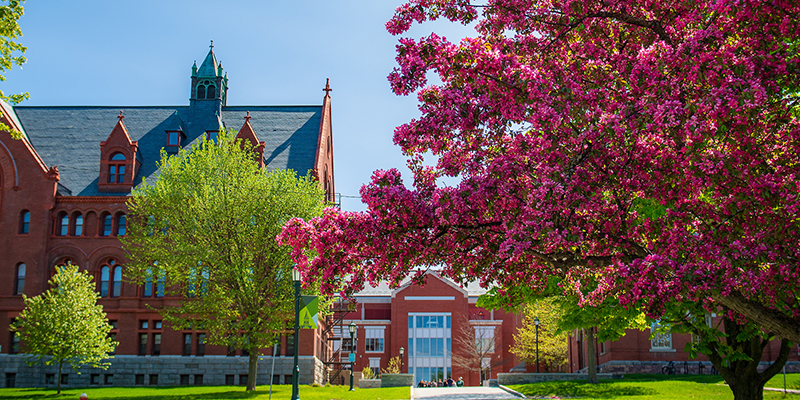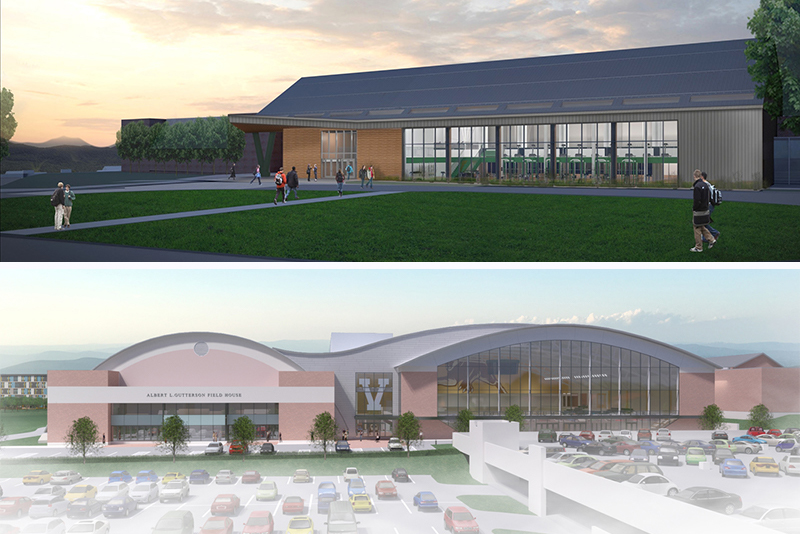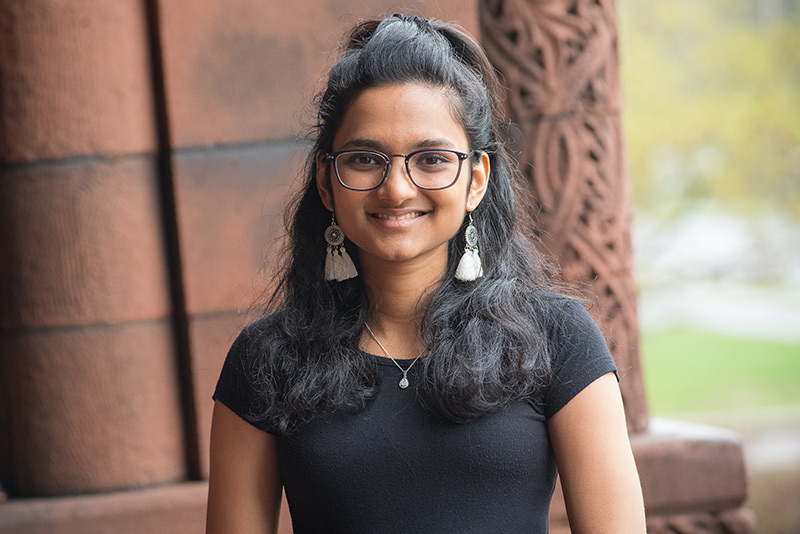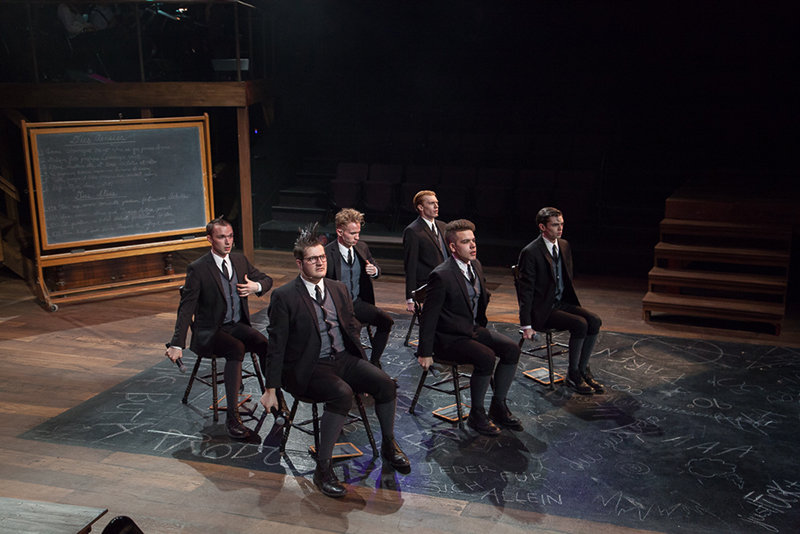The seven years of Tom Sullivan’s UVM presidency have seen the completion of a successful $500 million comprehensive campaign, a span of the lowest tuition increases in forty years, and transformation of the central campus through new construction and renovations, among other initiatives. Earlier this spring, President Sullivan sat down with Vermont Quarterly editor Thomas Weaver to share thoughts on his years as UVM’s twenty-sixth president and the next chapter in his life as a UVM professor.
If you think back to your initial impressions of UVM, what has held steady?
During my first semester, I spent a lot of time with all of the respective groups—Board of Trustees, all the shared governance groups, alumni, deans and vice presidents, and I asked them how they would characterize UVM students. In every case, it came down to exactly the same description: bright, curious, independent-minded, civically engaged, passionate about the outdoors and environmentally sensitive. That hasn’t changed. Each year, in fact, I’ve seen the truth of that more and more.
What were the most challenging issues or moments of your presidency?
The University of Vermont, much like most colleges and universities today, has financial constraints. If you look at the history of the University of Vermont going back through our early origins right up through the affiliation with the state in 1955 to the present, we have had significant financial constraints. Historically, it has been a real challenge year after year, with so little of our operating budget (approximately 6 percent) coming from the State of Vermont. But it’s not unique to UVM or public schools. We can point to schools all around us, including Dartmouth and Middlebury, who are having financial challenges.
Hence, the importance of successful campaigns, creating a culture of philanthropy. Because we can’t increase, nor should we, our tuition substantially more; that’s been a core, fundamental first principle of our strategic action plan and of our campaign. We’ve raised more than $83 million dollars for scholarships to ensure affordability and students’ financial access to success. This is something you have to pay attention to all of the time. How can you bring in more revenue to support all of the great programs and the imagination of the faculty and, at the same time, moderate that growth so it is affordable for students and their families? It is a real tension point.
Some of our conversations around diversity and inclusion and race on campus have been challenging. As I look across higher education, there isn’t a day that doesn’t go by that there isn’t some university imploding over social or political issue of the day. I think we’ve been very fortunate here. So much of our social engagement in the country today is very coarse and sometimes without the norms of civility. But I think we’ve maintained, by and large, a very respectful, civil discourse around some difficult issues. We have a way to go, but I think we made progress because we communicated respectfully and stayed at it. It’s not perfect, but it’s better.
As you step down from the presidency, are there changes or initiatives you’ve had a hand in that might be lower profile, but that you feel are impactful?
We’ve planted more than five hundred new trees and added more than ten new pieces of public art to campus. I think that over time, particularly as the landscape matures, it’s going to add a real richness to the campus. I think first impressions—of people or places or spaces—are very important. When we’re recruiting students, or staff, or faculty, this is incredibly important. As a residential Public Ivy university, we ought to look fresh and clean and traditional in the sense of the architecture. And I’m very fond of contemporary art adjacent to the more traditional buildings, the juxtaposition of the history and the design. I think they fit very nicely together. Leslie and I walked campus many evenings, and I always had an eye out for where we needed trees or where a piece of art would fit into the landscape.
Traditionally, the President of the United States leaves a note of encouragement and advice for his successor. If we had this tradition among UVM presidents, what would your note to Suresh Garimella say?
I try not to give gratuitous advice, but one of the most important things I would share with anybody in a leadership role is the fundamental importance of relationships. We’re just coming through a highly successful comprehensive campaign, well beyond our expectations. As I reflect back, it was all built on relationships, cultivating and building warm, close, personal relationships with people. You can’t accomplish much, particularly long-term objectives, without building a constituency for the ideas and expectations that will drive the university forward.
What’s next for you and Leslie in the year ahead and beyond?
We have a wonderful opportunity to go off through a research sabbatical to Cambridge University in England, where I’ve been asked to be a visiting faculty member. I’m going to finish a book on First Amendment speech, which ties into some of my comments earlier about speech and expression on campus.
I’m going to be stepping out this June from thirty years of higher education administration. And I look forward to getting back to my real academic and professional passion which is teaching students, writing, and scholarly activities. I have three areas of specialty, anti-trust law and competition, complex litigation issues, and constitutional law. My sense is that I’ll be teaching almost exclusively in the constitutional law area in political science courses and the UVM Honors College.
Especially during these times, I’m looking forward to helping undergraduates better understand our rich constitutional history. I feel that our country has lost so much of our civic education—our understanding of the founding of the country, its evolution, both the positive aspects and the negative aspects that we must grapple with more fully.
ALUMNA’S RETURN
Spring 2011, Leslie and Tom Sullivan’s nephew Ben Barash was graduating from the University of Vermont. Given that UVM was Leslie’s alma mater, Tom got behind the idea of a trip out east from their home in Minneapolis, a chance for him to see his wife’s university for the first time while attending commencement. The weekend would leave him impressed with Burlington and the university on the hill, rich in history and natural beauty.
A year later, as the University of Vermont searched for its twenty-sixth president, the then provost of the University of Minnesota was intrigued. Months later, the Sullivans were moving into Englesby House.
Reflecting on what it’s been like returning to her alma mater as spouse of the president, Leslie Sullivan ’77 says, “It’s been a little magical.” She notes that Burlington felt instantly familiar, and even better than during her college days: “It felt freshened, more vibrant.” She vividly recalls taking the ferry from Port Kent to Burlington on a summer day, as they completed the drive from Minnesota to Vermont to begin this new chapter in their lives. Driving up College past a bustling Church Street, the Sullivans figured there must be a special event. Nope, just Burlington in summer.
Leslie Sullivan looks forward to a bit of a slower pace after June 30. But, valuing all of the relationships built across the past seven years, she’s sure the transition will be bittersweet.
“It’s been an incredibly rewarding and fulfilling seven years,” she says. “There have been myriad opportunities to do things that are really meaningful to me. I’ll miss that almost daily sense of connection with fellow alumni, spending time with people who care deeply about the university, people who are smart and interested and interesting. It’s been a gift.”
Source: UVM News



























